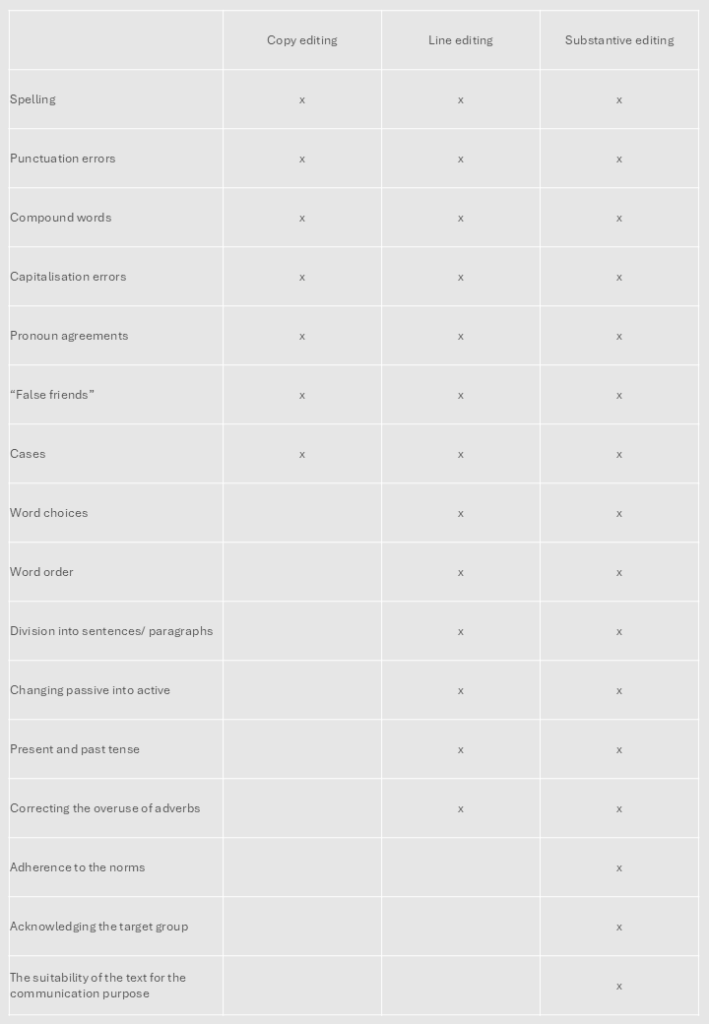
Polished text, strong impact
It is always worth proofreading the language of the text you are publishing. Fluency and error-free language build a reliable and expert image of the text and the company it represents. The reader of a high-quality text is able to focus better on the content and the message, which means that the message is better received. It is easy to get blinded by your own text, which is why even a skilled writer should use a language professional. Sometimes a superficial proofreading is enough, but at times the text benefits from a more thorough review and editing.
Proofreading and editing is usually done by a native speaker.
Copy editing, line editing, substantive editing – what is the difference?
Copy editing
Copy editing (sometimes also called proofreading) focuses on superficial corrections to the text without deeper examination. Its primary purpose is to check spelling and grammar. In addition, it also involves making the text slightly more fluent, for example by changing the word order. Copy editing is usually sufficient when the text is structurally sound and contains mainly minor spelling and grammar errors.

Line editing
In addition to spelling and grammar errors, line editing also includes checking the content and the structure of the text. It is made smoother and easier for the reader to understand by improving the clarity, style and flow. It enhances the effectiveness of the writing while respecting the author’s voice.
Substantive editing
Substantive editing is a broader term than copy editing or line editing; the purpose is to improve the impact and credibility even further by making significant changes to the structure, content, or style of a text. This ensures clear, cohesive language that fits the communication goals.

